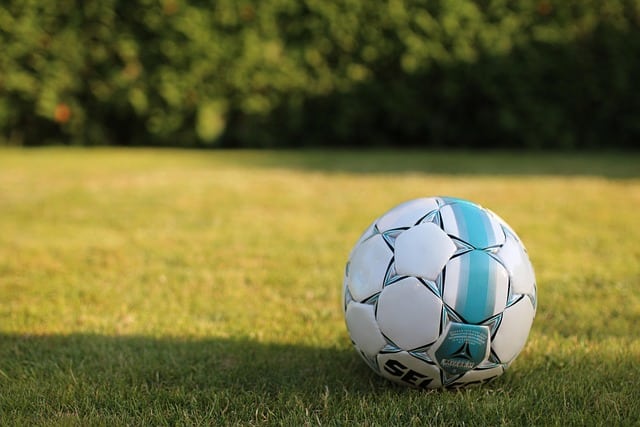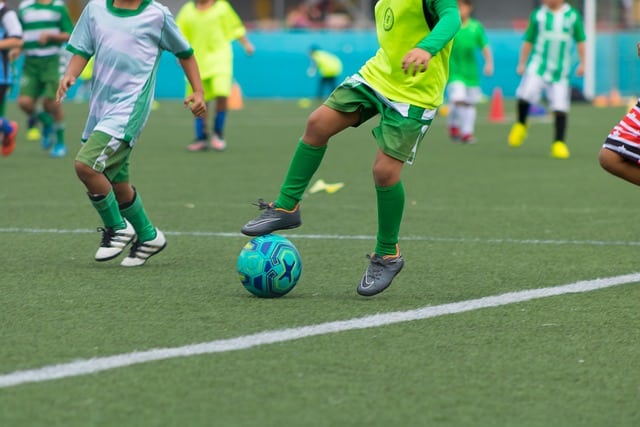When it comes to football, nothing beats the feeling of seeing your hard work on the training ground translate into success on the pitch. But achieving that takes more than just practice—it requires the right type of training drills. Whether you’re an aspiring professional, a weekend warrior, or a coach helping players reach their full potential, the effectiveness of football exercises is what really matters.
From passing drills to speed and agility training, each session must have a specific purpose. In this article, we’ll delve into some of the most effective drills for football skill development that can elevate your game and transform your players into more complete athletes.
1. The Power of Passing Drills: Mastering Communication and Accuracy
Passing is one of the fundamental pillars of football. If a player can’t pass well, the whole team struggles to maintain possession, which means losing out on scoring opportunities. Passing drills not only focus on precision but also on building trust and communication between teammates. A well-executed pass often makes the difference between a goal and a missed opportunity.
One great passing drill is the “Triangle Passing Drill”. Three players form a triangle, and the player with the ball must pass to one of the other two players. After passing, they immediately move to the open space to receive a return pass. This drill improves accuracy, first touch, and quick decision-making. The intensity can be increased by reducing the space or adding in a defender to simulate game situations.
Another popular drill is the “One-Touch Passing Drill”, where players pass the ball to each other using only one touch. This improves passing speed, technique, and ball control. It forces players to think quickly and enhances their ability to make decisions under pressure.

2. Dribbling Practice: The Art of Ball Control and Agility
Dribbling is often what separates a good player from a great one. Mastering dribbling doesn’t just mean running with the ball—it’s about maintaining control, changing directions swiftly, and being unpredictable. Effective dribbling practice ensures that players can maneuver through tight defenses and hold onto possession during high-pressure moments.
One effective drill is the “Cone Dribbling Drill”. Set up a series of cones in a straight line or zigzag pattern. Players must dribble the ball around the cones without losing control. The challenge increases as the space between cones gets smaller, or the drill requires players to change direction more quickly.
Another great drill is the “1v1 Dribbling Drill”, where two players face off, and one tries to dribble past the other. The defender’s goal is to prevent the attacker from advancing, while the attacker must find a way to beat them. This drill simulates match conditions and improves both offensive and defensive dribbling skills.
3. Shooting Techniques: Turning Opportunities into Goals
Shooting is, of course, the most rewarding skill in football—the moment when all the hard work pays off. Developing accurate and powerful shooting techniques requires more than just hitting the ball hard; it’s about timing, precision, and proper foot placement. Whether it’s a long-range strike or a close-range finish, shooting drills are essential for any player looking to improve their goal-scoring ability.
The “Shooting with Movement Drill” is a great way to practice shooting under realistic conditions. In this drill, players start with the ball at the edge of the box, make a run towards goal, receive a pass, and take a shot on target. This drill helps players improve their shooting accuracy under pressure and strengthens their ability to shoot while on the move.
For a more challenging drill, the “Shooting with Defenders” involves a player receiving a pass in the penalty area while being pressured by a defender. The player must adjust their position and technique to shoot past the defender and score. It simulates real match conditions and improves shooting accuracy under defensive pressure.
4. Speed and Agility Training: Reacting to the Game’s Demands
Football is a game of speed, and not just sprinting down the wing. It’s about quick acceleration, rapid direction changes, and being able to recover swiftly. Speed and agility training help players move faster on the pitch and maintain balance while executing complex moves.
The “Ladder Agility Drill” is a fantastic way to work on quick feet. Set up an agility ladder on the ground and have players run through it, placing one foot in each square. The drill can be made more challenging by increasing the speed, adding in lateral movements, or introducing a ball for dribbling while performing the drill.
The “Cone Weaving Drill” improves both agility and body control. Arrange cones in a zigzag pattern, and players must weave through them as quickly as possible without touching the cones. This drill sharpens a player’s ability to change direction quickly, which is crucial for both attacking and defending situations.
5. Footwork Drills: Precision and Movement
Footwork is often underestimated in football, but good footwork lays the foundation for every other skill. Players who have excellent footwork are quicker to react, more accurate with their passes and shots, and better equipped to defend. Whether it’s for dribbling, passing, or even shooting, great footwork ensures that a player is always in the best position to make the next move.
The “Quick Feet Drill” is a simple yet effective drill to enhance footwork. Have players stand on the spot and quickly tap their feet back and forth, alternating between their left and right foot. This drill strengthens the muscles required for fast, precise movements and improves overall agility.
Another useful drill is the “Box Footwork Drill”, where players are required to shuffle around the perimeter of a square while maintaining quick and controlled foot movements. This drill helps improve lateral movement and the ability to pivot while maintaining balance.
6. Tactical Drills: Thinking Like a Footballer
Tactical drills may not always be as exciting as dribbling or shooting, but they are absolutely vital for player development. Football is just as much a mental game as it is a physical one. Players need to understand their positioning, the flow of the game, and how to exploit spaces.
The “3v2 Attacking Drill” is a great way to teach players how to exploit numerical advantages. In this drill, three attackers try to break down two defenders in a confined area. The goal is for the attackers to move the ball quickly, make runs, and create space in order to score. It teaches players how to think strategically and capitalize on situations.
Another important drill is the “Small-Sided Game”, where teams of 3-5 players play on a smaller field. This encourages players to make quick decisions, maintain possession under pressure, and develop their tactical understanding in tight spaces.
7. Player Development: Consistency is Key
The key to any footballer’s success is consistency. No one improves overnight. It takes repeated practice and dedication. The most effective football exercises are the ones that players do regularly, because skill development doesn’t happen with sporadic efforts. Whether you’re working on passing, dribbling, or shooting, the more you practice, the more automatic these skills become.
Beyond individual drills, players must also focus on their mental development. Tactical awareness, leadership, and the ability to stay calm under pressure are all aspects of player development that need attention. Coaches should foster an environment that encourages players to learn from mistakes and continuously strive for improvement.
Conclusion: Training with Purpose
Football training is about so much more than simply going through the motions. Effective football training drills, whether it’s passing, dribbling, or tactical drills, should be purposeful and tailored to the individual needs of the players. While the technical side of the game is critical, physical and mental training are just as important.
The beauty of football is that there’s always room for improvement. Each training session is an opportunity to sharpen skills, learn new techniques, and take your game to the next level. So, don’t just go through the motions—train with purpose, and let your passion for the game fuel your development.
Frequently Asked Questions (FAQs)
- What are the best football drills for beginners? For beginners, simple passing drills, cone dribbling exercises, and basic shooting drills are excellent for building fundamental skills. Focus on proper technique before moving to advanced exercises.
- How can I improve my speed for football? Incorporate sprinting drills, ladder agility exercises, and cone weaving drills into your training. Focus on improving your acceleration and quick direction changes for a significant speed boost.
- How often should I practice football skills? Practicing at least three to four times a week is ideal for continuous improvement. Consistency is key for developing muscle memory and improving overall performance.
- Can tactical drills help me become a better footballer? Absolutely! Tactical drills teach players how to make smarter decisions, maintain defensive shape, and exploit attacking opportunities. They are crucial for player development and game awareness.
- What is the best way to develop ball control? Regular dribbling exercises, such as cone drills or 1v1 situations, are great for improving ball control. Practicing with both feet and under pressure will help you maintain possession in tight situations.
- What role does footwork play in football? Footwork is essential for nearly every aspect of football, from dribbling and passing to shooting and defending. Practicing quick, precise foot movements enhances balance and agility, giving you more control over the ball and your body.



